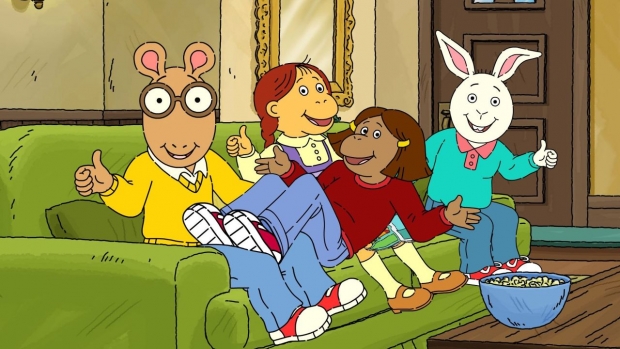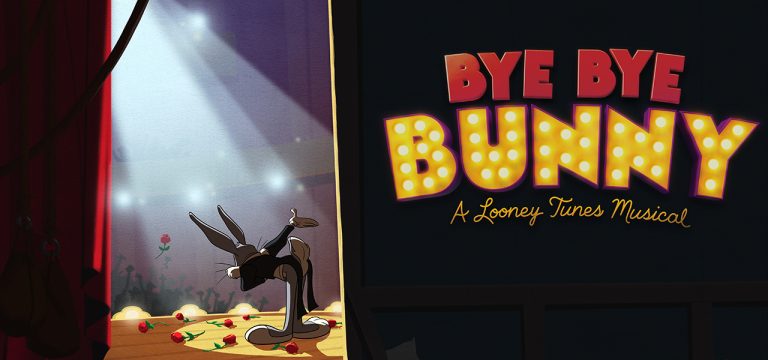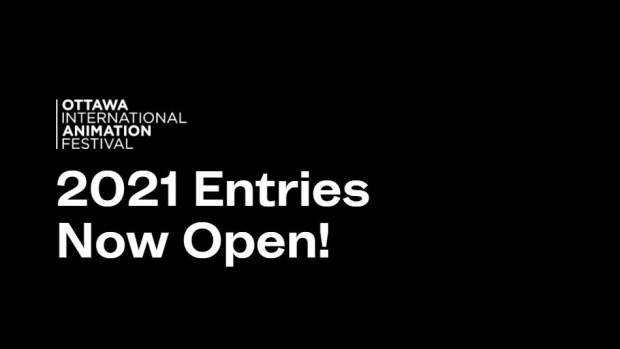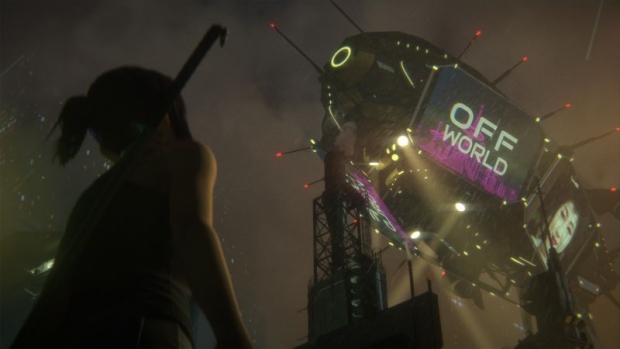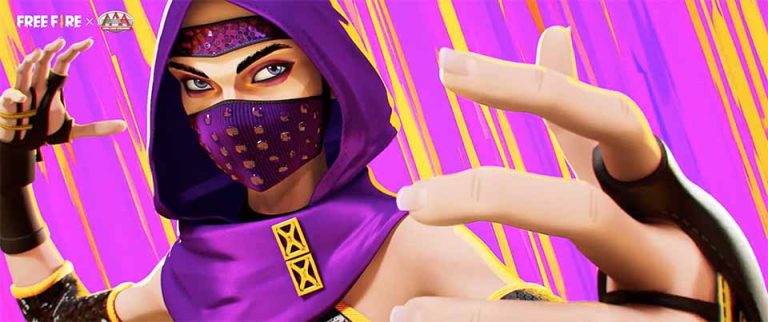Rosenberg’s 2D animated film, Charlotte, releases in U.S. theaters starting today, April 22; it tells the true story of a young woman named Charlotte Salomon (Kiera Knightly) who comes of age in Berlin on the eve of World War II. Despite the world crashing down around her – both within her own family and due to the war raging across Europe – Charlotte has a fierce resolve to become an artist. However, her dream becomes derailed when antisemitic policies inspire violent mobs and forces Charlotte to leave Berlin and the prestigious Art Academy for the safety of the South of France, where her ambitions are once more interrupted by tragedy and dark family secrets that are revealed.
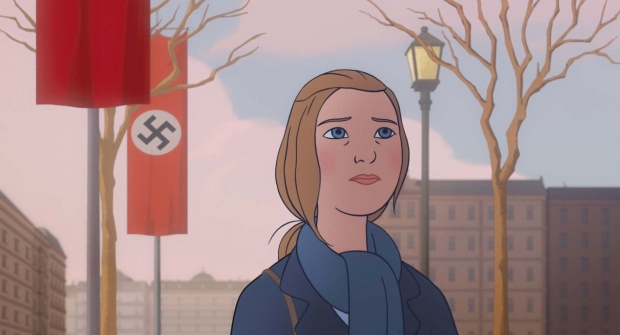
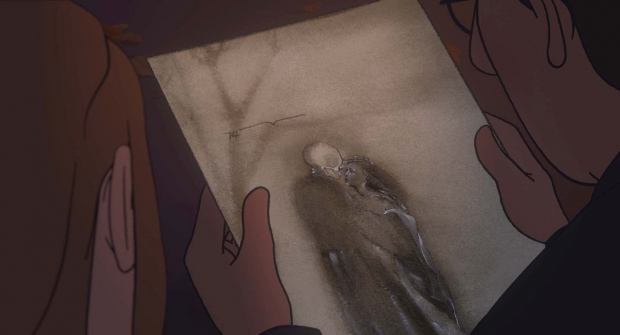
“My mother was born in Siberia in 1941, because the Russians and the Germans arrived in Poland at the same time, and my grandfather and grandmother went to Russia and hid in Siberia,” says Rosenberg. “They survived, but everyone else, except for a handful of people, did not. So there’s always this impetus to really celebrate people like Charlotte and her work as a way of saying, ‘We’re still here.’ I think it’s similar with other cultures where you grew up with a near history of violence.”
While taking place during war, Charlotte is largely focused on a young woman who paints away her demons and strives to show the world, with every stroke, that happiness runs deeper than suffering. It’s a message Rosenberg and the rest of her family know well.
“The concept of using Charlotte’s paintings as a transition device, that happened late in the game but, for me, seeing that on screen was one of the most rewarding parts of the whole experience,” says Rana. “We literally deconstructed her paintings by creating layers that we would animate on top of. Most of it was done through compositing and there was a lot of back and forth on Research and Development. But once it came to life, especially when it was up on the screen, it felt like we were part of Charlotte’s legacy. She created ‘Life? or Theatre?’ to tell the world this story. So now, this is us grabbing the baton from her and saying, ‘Alright, world. Here are Charlotte’s paintings.’ And that was really when the film came together for me in a very profound way.”
“What we have in Charlotte is someone who faces all of that tragedy through committing to her passion for creativity,” says Rosenberg. “And she saves herself, even though, in the end, her life is taken away from her.”
Rosenberg adds, “When you make a film about someone who dies in the Holocaust, it’s important to do what you can to create realism.”
From there, Warin says the mission for Charlotte became to replicate that same emotion and connection between the audience and the material.
“The collection was called, ‘Life? or Theatre?’, and it became something really special to me,” says Rosenberg, known for producing dramas like Where the Truth Lies, Natasha and Ararat. “On my mother’s side, we’re a Holocaust family and I sort of totemised Charlotte’s work. And about 10 years ago, I was on a morning run and the idea popped into my head that Charlotte Salomon drew her life story. So I needed to produce an animated film of her life story, despite never having worked in animation. Thank God, I found Christina [Rotsaert], who had worked in animation for decades, so that I could rely on someone else’s expertise in the medium and bring my experience of filmmaking and creating dramatic films for an adult audience.”
Of course, this made animating the film much more difficult.

“To see the incredibly challenging life that she lived, that she portrayed in her artwork, it was a new opportunity for me to move into an adult drama, which is not very commonly produced in animation,” says Rotsaert, known for her work on Johnny Test and PAW Patrol, and who served as co-producer on Charlotte alongside producer Rosenberg. “It was a very touching story, and it was a very interesting subject matter for me to be able to take and create and bring to the screen.”
“I didn’t know anything about Charlotte, but the story grabbed me very quickly,” says Warin. “It was everything I love. It’s a biography. It’s about a painter. It’s a drama. But, when I saw the beginning of the animatic, I could also really feel the emotion in it. And everybody on the team had their own special connection with the subject, which gave the movie even deeper emotions.”
“One of the quiet innovations of Charlotte is that it probably has more close-ups than most other animated films,” says Rosenberg. “And those only work because of the incredible work that Mel did in the complex facial expressions.”
At the age of 13, during her bat mitzvah, Julia Rosenberg was given a gift that became, in her words, “the most important thing in the world to me.” The gift was a book containing a collection of paintings by German-Jewish painter Charlotte Salomon, the most prolific artist during the Holocaust.
“Charlotte’s story is also a story of someone who is overlooked and marginalized,” says Rosenberg. “And I think what she created can inspire people to remember that, if they listen to their inner voice, and they are committed to telling their story and their family story and remembering who they are and where they come from, that it doesn’t matter what happens. Tragedy can befall you, circumstances outside of your control can destroy you, but you still have the ability to make a meaningful life for yourself.”
Believing that only the extraordinary will save her, Charlotte embarks on the monumental adventure of painting her life story. In less than 18 months, Charlotte completes more than one thousand gouaches depicting the lives of her parents, grandparents, friends, and lovers. The result is her autobiographical collection, Life? Or Theatre?, which has been exhibited around the world, including London’s Royal Academy, Museum of Fine Arts Boston, and the Art Gallery of Ontario.
Just before she’s taken away to the concentration camp, there’s a scene in the film where Charlotte and her husband are looking at the sunset, and Charlotte says, “My God, it’s so beautiful,” showing that, even after witnessing so much death and violence in her life, Charlotte is still able to be moved by the beauty that remains in the world around her.
“From the beginning, this movie was really about using animation as a tool to go deeper with emotion and go deeper with the audience so that you create a special link between the two,” says the director. “And the best way to show the emotion, the best way to grab the audience and get them attached to this character, is to go a little bit closer.”
It’s true that Charlotte’s life is not spared, and the young painter is murdered in Auschwitz in 1943 at the age of 26. But, for Rosenberg, Charlotte’s paintings are a symbol of hope and proof that one can still find joy and purpose in the midst of immense pain. And that’s why the paintings still play starring roles in the film, animated as moving pictures, not just still frames, and serving as transition devices.
Closeup shots are a repeated staple in Charlotte – from zeroing in on times of solitary sorrow with her family, to moments of intimacy with her partners – all used to amplify the animated performances of the actors and their characters.
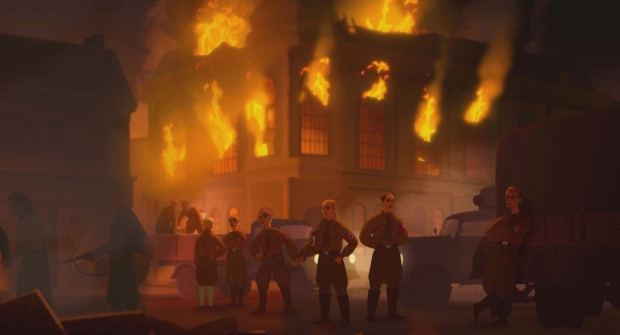
“You can’t use the typical tricks to squash, stretch, and exaggerate the animation to get yourself out of a bind,” notes Rana. “So we ended up doing a lot of rotoscope work and a lot of reference videos. But the subtle facial features and the dramatic acting, it’s all so you buy into the grittiness of this world. Otherwise, it felt a little too cartoony, and we weren’t making a cartoon.”
He adds, “It also was a really great opportunity for me to be a part of a story that, though it happened many years ago, still echoes to this day. I feel like it can shine a light on atrocities that are still happening.”
While the film’s animated aesthetic – created with Toon Boom – was originally intended to look like Charlotte’s expressionistic paintings, Rosenberg and the team quickly realized that their desired, emotional effect would be more effective with more realistic animation that allowed them to show even the most subtle of facial twitches.
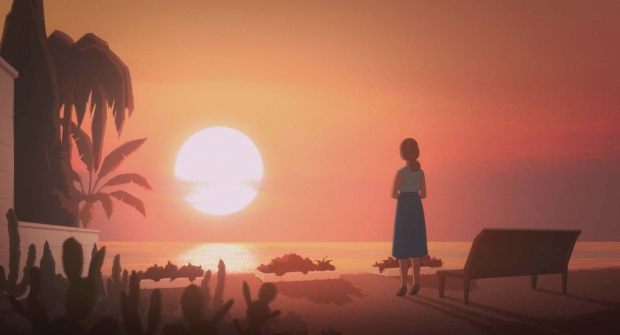
“I am very sensitive toward the plight of people, and I understand that what Charlotte had gone through is not unique to one person at one point in history and time,” says Rana. “Many people lost their lives during The Partition process, so the experience of working on Charlotte allowed me to reflect on my father, who was born in India, that is now present-day Pakistan, and have a conversation with him to understand better what somebody like Charlotte would have gone through at that time.”
“We also realized early on that we needed a clear visual distinction between the world in which Charlotte lives and her paintings,” explains Rosenberg. “Otherwise – imagine for a moment that she’d be painting a photograph – if the world she lived in visually was similar to what she was painting, the impact of the paintings would not be as great and there would be no stable ground for the film.”
Charlotte’s work has inspired a live-action film (1981), a documentary feature (2011), an opera (2014), a prize-winning novel (2014), an award-winning ballet (2015), and several plays. But Rosenberg’s animated film – featured both in English and French – marks the first time Salomon’s story will be brought to such a wide audience. The producer hopes that the film and Charlotte’s paintings – come to life – will help audiences gain an appreciation for the painter that Rosenberg has had since age 13.
Mel Olm, Charlotte’s co-animation director, adds “I hope that this film helps change North America’s perception that animation is for children. It is changing a little bit but, personally, slower than I would prefer. A lot of the adult, serious animated films are still primarily coming from Europe or Asia. So I’m very proud that we were able to make an animated film that’s both beautiful and serious. And I’m hoping that it’ll continue.”
The film – produced with January Films, Les Productions Balthazar, and Walking the Dog – is directed by Leap!’s Éric Warin as well as Angry Birds: Summer Madness’ Tahir Rana, who also comes from a family that’s known great suffering due to The Partition of India in 1947.
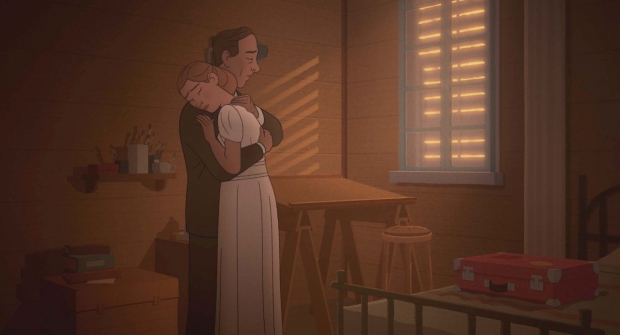
Victoria Davis is a full-time, freelance journalist and part-time Otaku with an affinity for all things anime. She’s reported on numerous stories from activist news to entertainment. Find more about her work at victoriadavisdepiction.com.
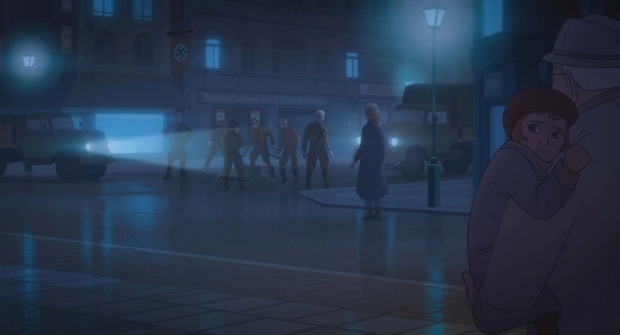

Though almost everyone on the team – including Rana – was introduced to Charlotte’s story for the first time by Rosenberg, their connection to the material was immediate, some through their own family experiences, others through the emotion present in the script and early visuals.


